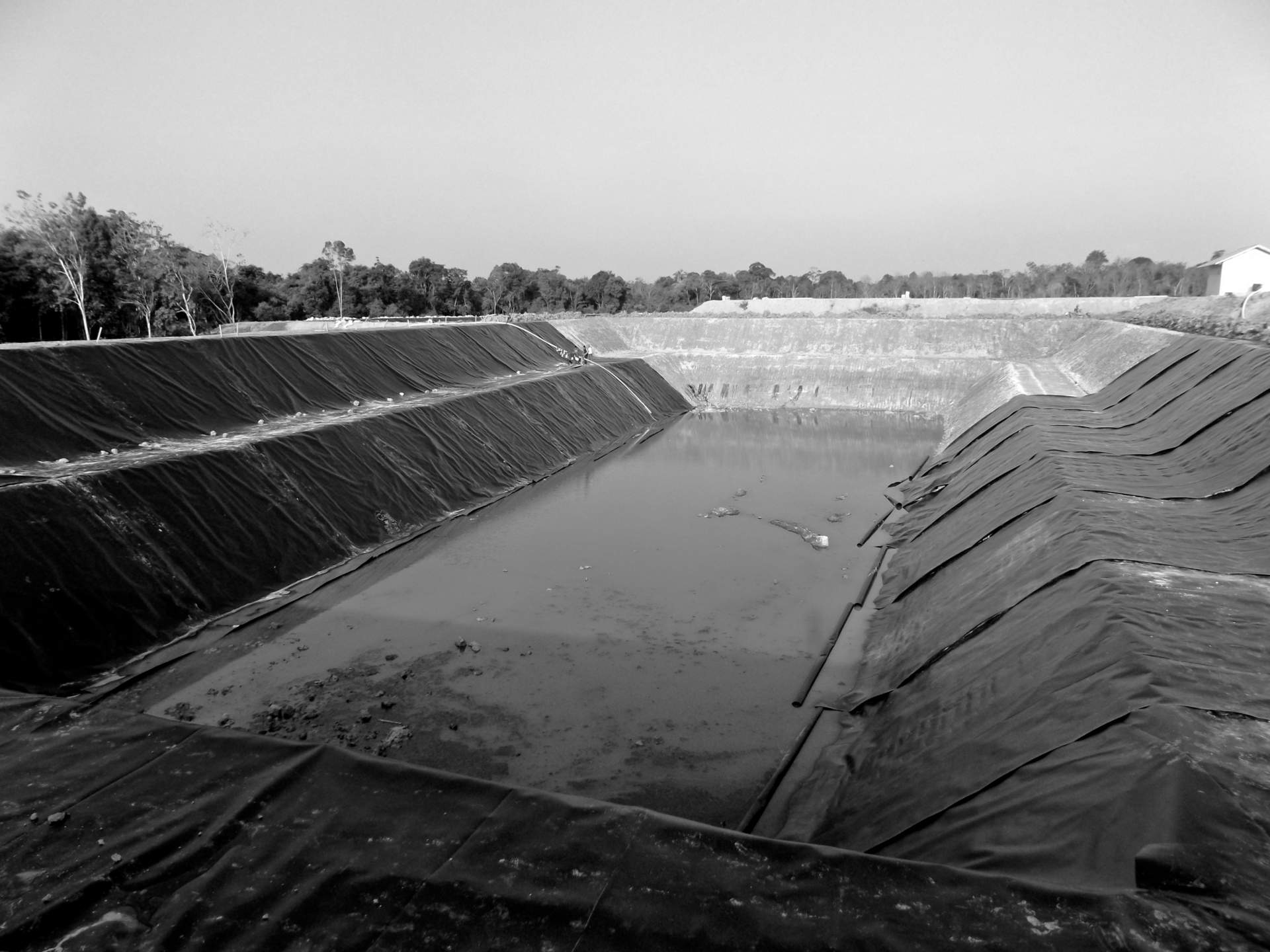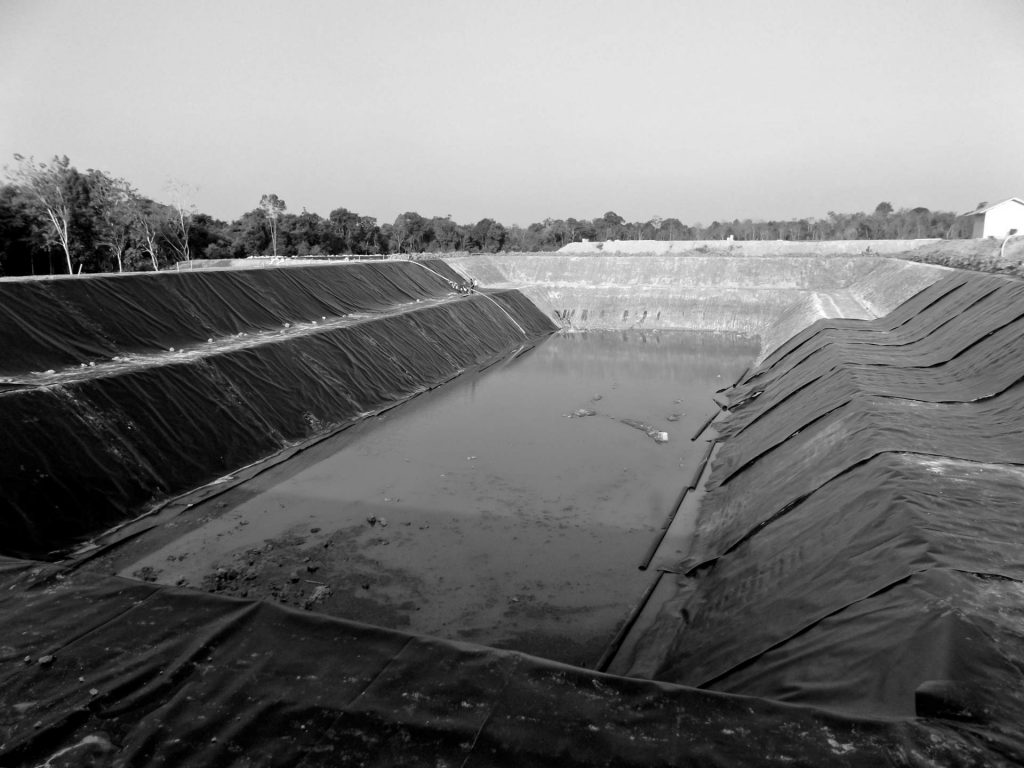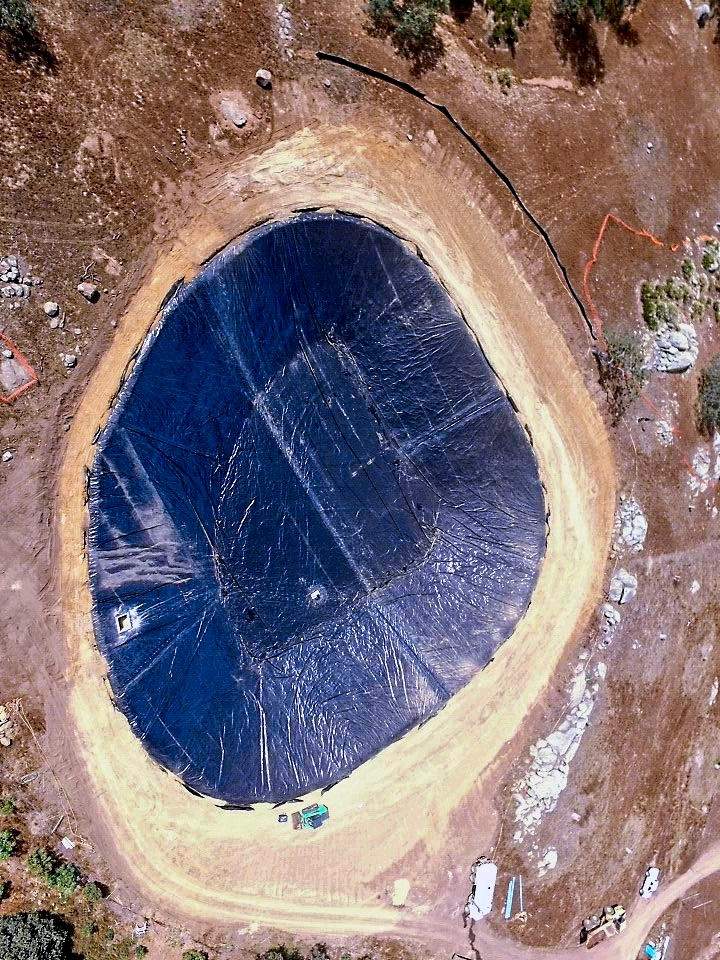Stormwater Retention Pond Liners
Stormwater Retention Ponds are used to collect runoff during periods of heavy rain.


Stormwater Retention Ponds and the Role of Liners
Cities rely on retention ponds to manage stormwater, especially during heavy rains when existing drainage systems can’t keep up. Without these ponds, excess runoff can overwhelm stormwater drain lines, leading to flooding, sinkhole formation, and even groundwater contamination.
This problem is especially common in parts of the Southwest, where long dry spells are followed by sudden, intense storms. When rain falls on paved surfaces—like parking lots, roads, and rooftops—it runs off quickly instead of soaking into the soil. To handle this surge, many municipalities require developers of shopping centers, subdivisions, and commercial properties to include retention ponds as part of their site design.
Runoff from developed areas isn’t just about volume—it often carries oil, pesticides, fertilizers, and other pollutants. Retention ponds give water a place to settle, allowing debris and contaminants to filter out before the water either seeps into the ground or flows into larger management systems.
While some stormwater basins function as little more than dry ponds, others require protective measures. In certain conditions, a geomembrane liner is essential, such as:
- When the surrounding terrain includes limestone, dolomite, or other soluble rock that increases the risk of sinkholes.
- When stormwater may contain pollutants that could seep into and contaminate groundwater.
- When seepage could mobilize existing contaminants already present in the soil or water table.
The Western Liner Advantage
Western Liner provides geomembrane liners specifically designed for stormwater catch basins. Our Aqua Series reinforced polyethylene (RPE) liners are highly durable and nearly impermeable, preventing leakage and ensuring water is directed where it needs to go. Backed by a long-term guarantee, the Aqua Series delivers both reliability and peace of mind. The RPE geomembranes are tough and long-lasting, which makes them perfect for erosion control and water treatment.
Beyond liners, we also manufacture permeable needle-punch non-woven geotextiles in multiple gauges, customized to the exact panel size and shape you need. Fabricated in our factories, these materials simplify installation while saving both time and money.

What's the purpose of a retention pond?
The principal purpose is to capture storm water and either hold it or channel it into a water management system. This is both to avoid flooding of impermeable surface, and to channel the water into a management system for usage. Floodwaters typically accumulate debris also, and as the drainage basin for an area, the retention pond is a good place to filter out such debris and pollutants as the churned-up storm water settles. Retention pond liners are specified according to the designed purposes of the retention pond.
Why are retention ponds required in many localities when structures are built?
The modern development footprint typically covers once-permeable ground with impermeable surfaces such as asphalt lots, groomed playing fields, and the like. See our guide to Why Cities Require Retention Ponds. Municipalities increasingly require developments to retain a percentage of permeable surfaces so that rain water will:
- Accrue to the locality, either in the underground water table or the water management system.
- Not run outside of the municipality's water management system.
- Not stand in place and flood the surface, causing damage.
How do water retention ponds work?
Storm water accumulates downhill and becomes unmanageable. The retention pond is large enough to accommodate the sudden surge of water as it drains the surrounding higher slopes. From the pond, the excess water may be manageably channeled into a water management system, including subsequent ponds. Or the water may be left to soak into the ground at a slower pace, to evaporate, or to nurture the wildlife habitats that such ponds frequently become. How to line the bed of the pond will depend on how the water is to be treated. You can calculate the size of liner required for your pond project using our Pond Line Calculator.
What is the difference between detention pond and retention pond?
A retention pond or "wet pond" is designed to hold water continuously, and only partially drains any incoming surge of storm water. A detention pond is designed purely to capture the surging storm water, and to release it to a water management system at a manageable pace, and with storm debris cleaned out, etc - subsequently becoming a "dry pond" until the next storm. A retention pond is a buffer and a repository; a detention pond is principally just a buffer. See how both surge capture and recycling for irrigation come together in one such system with this Sports Field Drainage overview.
Our company maintains factories in Tolleson, AZ, Romulus, NY, and Great Bend, KS, so that we are able to service your needs wherever you are located in the country. For any questions and inquiries call today and one of our cover and liner experts will be happy to assist you.

